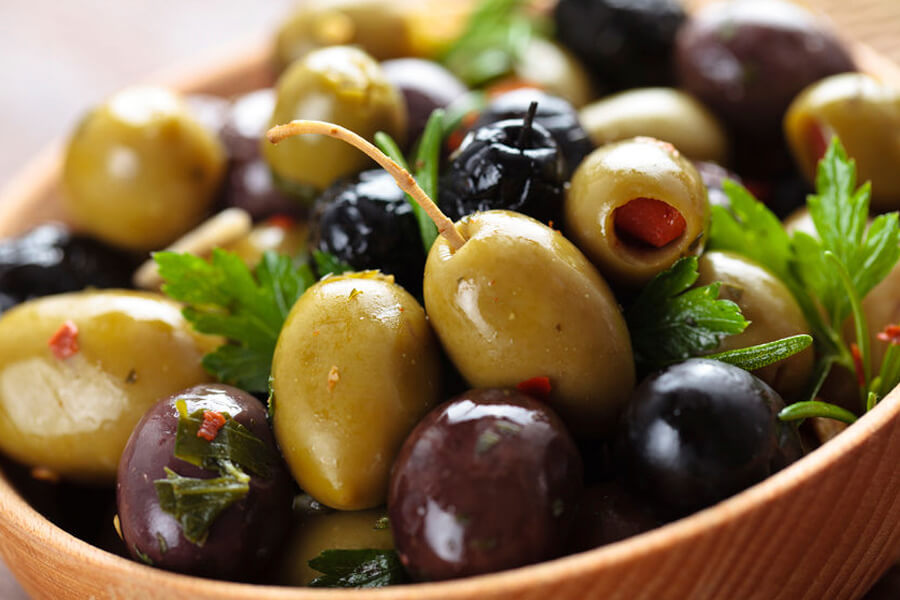When it comes to salty treats, you can’t beat the nutritional benefits of olives. They’re low in cholesterol and high in fiber, copper and iron. They’re also a staple in the Mediterranean diet, once of the healthiest diets around the globe, which involves eating lean meat, fish, whole grains, nuts, legumes, fruits and vegetables. Both olive oil and olives represent types of healthy fats (monounsaturated and polyunsaturated).
Good fats
Most experts agree that antioxidants can slow the onset of cancer and neurodegenerative diseases, such as Alzheimer’s. One type of antioxidant, called polyphenols, is found in abundance in olive oil. It works to prevent diseases linked to blood vessels and the heart.
Olives contain a plentiful amount of oleate, a monounsaturated fatty acid, which is believed to reduce the risk of premature death due to disease.
One caveat
One thing to be cautious of when consuming a lot of olives is how they’re preserved. It’s common for food producers to preserve olives in brine. Brine is high in salt, which can lead to high blood pressure, stroke and heart attacks.
As with any food, the key is moderation.
The nutritional content of olives
Do you like black olives, green olives or both? Regardless of your preference, most are relatively low in calories in terms of snacks. Here are some of the nutritional benefits of each:
Black olives (per 100 grams)
• 116 calories
• .84 grams of protein
• 10.90 grams of fat
• 6.04 grams of carbs
• 1.60 grams of fiber
Green olives (per 100 grams)
• 145 calories
• 1.03 grams of protein
• 15.32 grams of fat
• 3.84 grams of carbs
• 3.30 grams of fiber
Olive oil (1 Tablespoon)
• 119 calories
• 13.5 grams of total fat (9.85 grams of monounsaturated fatty acids; 1.42 grams of polyunsaturated fatty acids; 1.86 grams of saturated fatty acids)
In addition to eating olives on their own, you can add them to pizza, tacos, casseroles, omelets and cold salads. Olive oil is just as versatile; use it with vinegar for a salad dressing, drizzle it over raw or cooked vegetables or pasta, or dip bread into olive oil as a replacement for butter.


